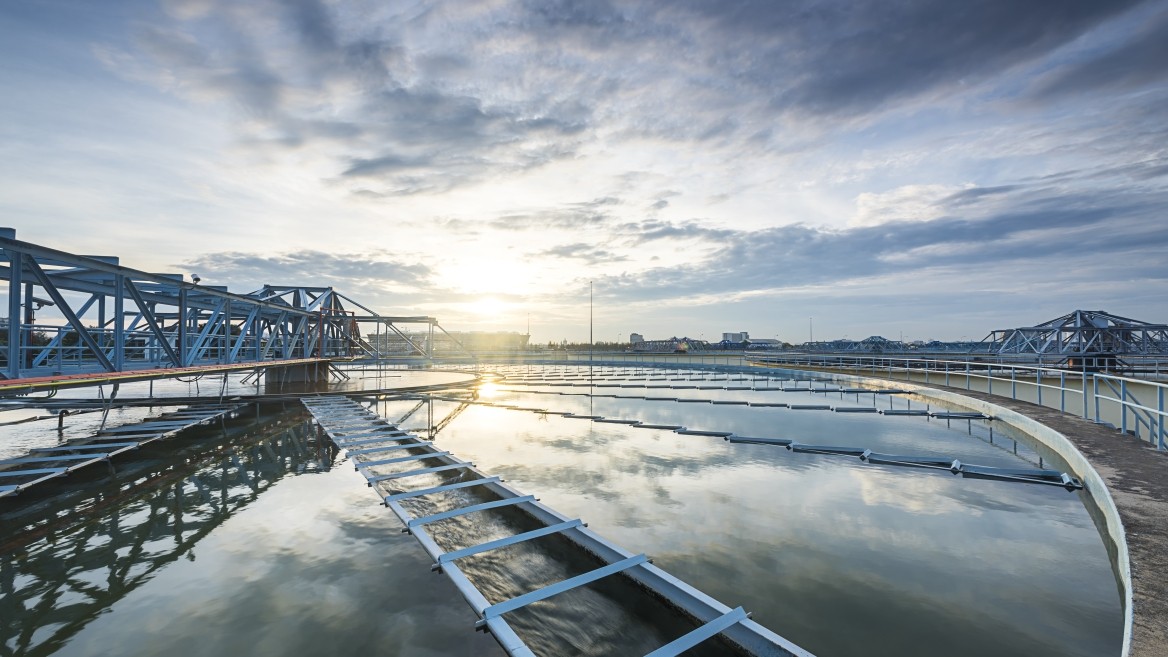Effective Odor Control and Mitigation in Wastewater Systems
Oftentimes, the most significant challenges designers of wastewater systems face are the ones that can’t be seen. Odor control and mitigation in wastewater systems are crucial for ensuring the well-being of wastewater treatment plant staff, communities, and protecting the environment. This article provides several insights on sampling and data collection approaches, dispersion modeling, identifying sensitive receptors, proper maintenance practices, use of counteractants, and vapor-based treatment technologies that can help water industry professionals control odors in wastewater systems.
Understanding the Factors of Odor Perception
It may not be the most glamorous facet of the wastewater industry, but understanding the intricacies of odor perception and implementing cutting-edge solutions is essential in creating environments that not only function flawlessly but also serve as good neighbors.
The olfactory dimension and its impact on the area surrounding a wastewater treatment facility are often overlooked but are perhaps one of the most intricate operational issues. The perception of odors is influenced by an intricate symphony of factors — frequency, intensity, duration, and offensiveness. Understanding these factors is paramount to effectively address control and mitigation measures.
Proactive odor control isn't just about being compliant; it's also about maintaining an acceptable, pleasurable environment for local community residents. This involves a multi-pronged approach that includes understanding the importance of odor control, setting realistic goals, and choosing the right odor control technology based on regulations and community expectations.
Odors in wastewater systems stem from a cocktail of chemical constituents. Volatile organic compounds and hydrogen sulfide are the usual suspects. Recognizing odor sources is the first step in crafting effective odor control strategies.
Sampling and Data Collection Approaches
To unravel the complex world of odors, designers and operators need accurate, reliable data that paints a comprehensive picture gleaned from different analyses.
Subjective Surveys: These are typically based on individual perceptions and opinions from affected stakeholders and can provide valuable insights into odor detection and intensity. These surveys are often validated with follow-up sampling.
On-Site Sampling: On-site sampling involves the use of colorimetric gas detection tubes and handheld meters to measure specific compounds in real-time. This approach allows for quick and convenient analysis of air quality. Gas data loggers can be setup for long-term monitoring to determine trends and concentrations of specific compounds under a variety of flow and atmospheric conditions.
Grab Sample Collection and Lab Analysis: Collecting air samples in bags and sending them to a laboratory for analysis, including odor panel evaluations, provides a comprehensive understanding of specific compounds present in the sample. Combining these methods ensures accurate and reliable data collection.
Air Dispersion Modeling and Odor Impacts
The data that’s collected will provide an estimate of the impact of odors emanating from a water reclamation or water resource recovery facility. Here’s where dispersion modeling — an essential predictive tool — is needed. This modeling approach takes emissions, meteorological inputs, and receptor locations into account to help determine the extent of odor impacts in different scenarios and how to achieve compliance with air quality standards.
The next step is to evaluate output concentrations from dispersion modeling with mitigation strategies and odor control technologies.
Odor Control Technologies
The types and concentrations of odors from collection systems and water reclamation plants are unique and a one-size-fits-all approach will not work in mitigating odors. The most effective odor control systems reflect a combination of minimizing odors from being generated and capturing, conveying, and treating odor emissions prior to being released to the atmosphere.
Operation and Maintenance: Effective maintenance and operation practices include minimizing scum and floatable build-up, reducing septic conditions, and preventing odor releases in wastewater systems.
Counteractants: Masking agents and reactants can be used to control odors. Masking agents, akin to perfumes, cloak odors that are released, while reactants are directly added to the liquid stream to neutralize odors from being generated.
Emissions Capture and Conveyance: Capturing and conveying odorous air is crucial for treatment. Tank covers, enclosures, ventilation, and ductwork all play a vital role in capturing and channeling odorous air to treatment equipment.
Vapor-based Treatment: There are numerous technologies available to treat odor emissions, including chemical, biological, and carbon. Each technology has advantages and disadvantages and selecting the right technology depends on the types and concentrations of odors present and the overall goals for odor control.
Different Approaches Prove Effective
Several real-world case studies demonstrate how odor-related challenges were successfully addressed.
Mixed-Use Development in New York, NY
A proposed 1.3 million gross square feet mixed-use development, including horse stables for the New York Police Department Mounted Unit on the ground floor, presented unique odor control challenges for existing and future residents. During the initial assessment, no odors from existing land uses were observed. The primary concern was the potential impact of odors from the new horse stables on the building’s future tenants and the surrounding community.
The project included literature reviews for animal odors and odor modeling and modeling of emissions from the horse stables. The primary pollutant of concern was ammonia from horse manure. The modeling results showed that the concentrations at the receptor points were below the odor detection threshold of five parts per million for ammonia. As a result, it was concluded that the proposed horse stables would not have any negative impacts on the surrounding community or the building's future occupants.
Buffalo Sewer Authority's Bird Island Wastewater Treatment Facility
The Buffalo (NY) Sewer Authority operates the Bird Island Wastewater Treatment Facility and was undergoing an upgrade to the primary treatment system. The facility is situated on an island and has residential areas on all sides.
To address odor concerns, a detailed sampling plan was implemented to understand the constituents and compounds being released from the primary treatment system. Data from grab samples and long-term monitoring revealed that hydrogen sulfide was the primary odor-causing compound.
The study assessed the effectiveness of various odor control technologies, including carbon columns, bio trickling filters, and chemical scrubbers. Due to the large range of hydrogen sulfide concentrations and the desire to minimize maintenance costs, a hybrid system — combining biological and carbon-based technologies — was selected. The benefits of the hybrid system include treating the wide range of concentrations of hydrogen sulfide while minimizing reducing replacement frequency of carbon.
Manasquan River Regional Sewerage Authority
In New Jersey, the Manasquan River Regional Sewerage Authority owns, operates, and maintains a 21.7- mile-long sanitary sewer collection system that serves the surrounding communities. This system experienced odor complaints and signs of pipeline and manhole corrosion in certain areas of the system.
Odor emissions and liquid wastewater samples showed the severity of the odor and corrosion issues and indicated that certain hotspots within the system still needed attention. After evaluating various technologies for both liquid and vapor phase control, a solution involving Bioxide (calcium nitrate chemical feed) addition for liquid phase and vapor phase control at manholes was recommended. This system is expected to improve corrosion and odor control while reducing corrosion-causing sulfur compounds in the transmitted wastewater.
Summary
Addressing odor emissions in collection systems and water reclamation plants necessitates tailored solutions for each specific application. The positive effects of odor mitigation extend both within the facility and to the surrounding community and the focus must be on understanding the key factors influencing odor perception and implementing proactive measures to ensure compliance and foster pleasant environments. Equipped with an understanding the causes of odors and the mitigation tools available, water industry professionals can develop comprehensive odor control plans that safeguard the well-being of staff, communities, and the environment.
This whitepaper was originally presented as a continuing education webinar. For more information on the Water Webinar Series, please contact Deborah Veal to receive updates on upcoming webinars.
Contributors: Ryan Christopher | Smitha Krishnan | Jessica Ping

Ryan Christopher brings over 16 years of experience working on the study, design, and construction services for water reclamation facilities across the county. Ryan has completed several odor control studies and designs. Understanding the source and cause of odors is critical to developing strategies to reduce odor emissions and he has led evaluations to determine the sources of odor, completed field sampling, evaluated various technologies, and completed final design of odor control equipment to minimize and mitigate odor emissions.

Smitha Krishnan is a senior environmental engineer at Sam Schwartz with over 10 years of experience in environmental review projects in New York City. In addition to planning assessments, she has experience in setting up and running AERMOD for HVAC stacks and CadnaA noise modeling. She also has experience in local, state, and federal environmental regulations, including NEPA, SEQRA, and CEQR. Ms. Krishnan was part of the environmental planning team at Sam Schwartz that worked on the air quality and noise components as well as other technical areas of the environmental review process for the Peninsula Hospital Site Redevelopment EIS in Queens, Wakefield Village EIS in the Bronx, Boston Road Rezoning EAS in the Bronx, Astoria Cove EIS in Queens, and 1440 Amsterdam Avenue EAS in Manhattan. Under Sam Schwartz’s on-call contract with DEP, she serves as an expert reviewer on behalf of NYC Department of Environmental Planning for CEQR air quality and noise analyses.

Dr. Jessica Ping is a highly skilled professional with 18 years of experience in water and wastewater systems engineering and management. She has worked with private entities, public organizations, academia, and NGOs, showcasing her expertise across a range of sectors. Dr. Ping is leading odor control initiatives in New York and New Jersey, focusing on water-related projects. Her portfolio includes comprehensive involvement in the planning, design, and construction of odor control facilities for water and wastewater treatment. She has collaborated closely with clients to deliver cutting-edge odor control solutions, overseeing the implementation of air quality monitoring systems, innovative modeling techniques, and risk management strategies.
